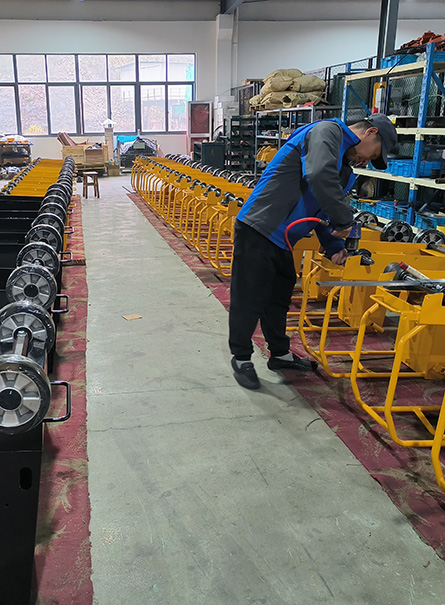Concrete Scarification: How to Utilize a Concrete Scarifier
What is concrete scarification? Scarifying is one of three concrete resurfacing methods. Concrete grinding removes surface coatings without heavily impacting the concrete underlayer. Scarifying goes deeper than grinding and creates a rougher surface. Scabbling uses compressed air to shoot debris onto the concrete surface, making it even rougher.
A concrete scarifier, aka concrete planer or milling machine, uses spinning blades that dig deeply (up to 1/4 of an inch per pass) to vigorously shave away the surface or create grooves. It is often used to level concrete and asphalt, remove trip hazards on sidewalks, create sidewalk grooves and remove heavy-duty overlays and hard industrial coatings.
Concrete scarifiers are available in electric- or gas-powered walk-behind models and hand-held units for smaller jobs.
How to Use a Concrete Scarifier
To get the most from the machine, follow these steps.
Step 1: Practice first
Practice operating the machine before you start working. Learn how to set the depth control and how to disengage and engage the drum.
Step 2: Set the right drum depth
The project should dictate the drum depth. If you have a thermoplastic line on an asphalt surface, you can drop the depth of the drum to maybe 1/32 of an inch so it’s just skimming along the top. On the other hand, with an industrial application, where you have 1/8 inch or 1/4 inch of epoxy, you really need to plunge that drum into the surface.
Be aware that setting the drum too low could cause the scarifier to bounce across the surface rather than plane it.
Tip: Before starting the scarifier, make sure the engage/disengage lever is in the disengage position. You don’t want the cutter touching the surface at startup.
Step 3: Make multiple passes if necessary
If you need to remove more than 1/8 inch of material, don’t strain the machine by trying to do it in one pass. If you tried that, the engine would labor, the belts would burn out and the carbide cutters would be damaged. The worst-case scenario is the carbide cutters, spacers and shafts break loose causing a workspace hazard.
Instead, use step cutting. For example, if you need to remove 1/4 inch of material, take two 1/8-inch passes.
Tip: It’s best to go north and south on the first pass and then east to west on the second. That allows for the material to be evenly removed to depth while allowing for any height differences in the surface.
Step 4: Move at the right pace and in the right direction
Move at a pace that allows the machine to cut the material. The size, weight and horsepower of the machine and the hardness of the material will dictate the speed. If you push the machine too fast, it won’t cut as deep as you want; it will skim over the top of the surface. If you’re using a self-propelled scarifier, make sure you hold onto it so it doesn’t walk away. Never stop while the cutter is engaged.
Tip: If you’re planing down a trip hazard, move the scarifier from the higher side of the concrete to the lower side.
Step 5: Pay attention to the spacing and pattern of the cutting assembly
The cutting flails should move freely on the shaft of the drums. If they’re tight, try removing a spacer. Always insert at least one spacer between a flail and the edge of the drum.
Adjust the spacing and the patterns of flails on the shaft to achieve different surface textures. The less spacing between flails, the smoother the finish.
Tip: Proper machine maintenance will help ensure you get the production levels you want. Follow the directions in the manual for lubricating the machine, checking the belts, changing out shafts, etc.
Step 6: Finish up with a grinder if necessary
Remember that concrete scarification creates a rough surface. If you plan to coat the surface, use a concrete grinder to smooth the surface before coating it.


